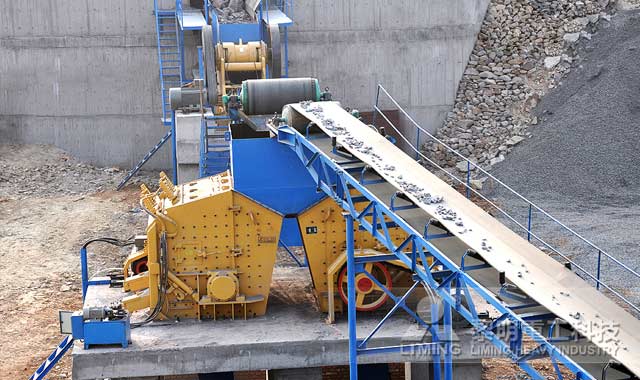A limestone aggregate processing plant, also known as a crusher plant, is a facility designed to crush limestone into various sizes for use in construction and other applications. Limestone is a sedimentary rock composed mainly of calcium carbonate, and it is a valuable resource widely used in the construction industry.
The primary function of a limestone aggregate processing plant is to crush the raw limestone into smaller sizes suitable for different uses. The process typically involves several stages, including primary crushing, secondary crushing, and screening. Let’s explore each stage in more detail.

- Primary Crushing: The raw limestone is initially blasted from a quarry and then transported to the primary crusher by large haul trucks. The primary crusher, often a jaw crusher, breaks the limestone into smaller pieces of a desired size. This stage reduces the limestone to a manageable size for further processing.
- Secondary Crushing: The crushed limestone from the primary crusher is conveyed to a secondary crusher, such as an impact crusher or cone crusher. The secondary crusher further breaks down the limestone into even smaller sizes. This stage is essential for achieving the desired aggregate size and shape.
- Screening: After secondary crushing, the crushed limestone is screened to separate different sizes of aggregates. Vibrating screens or other types of screening equipment are used to classify the crushed limestone into various grades. This process ensures that the final product meets the specifications required by customers or specific applications.
- Washing and Classification: In some cases, limestone aggregates need to be washed to remove impurities or contaminants. Washing may involve using water and specialized equipment to remove clay, silt, or other undesirable materials. Classification is another step that involves separating the limestone aggregates based on their size.
- Stockpiling and Storage: Once the limestone aggregates are processed and classified, they are typically stockpiled for storage or transportation. Stockpiling ensures a steady supply of aggregates for construction projects. Proper storage is crucial to prevent contamination or degradation of the limestone aggregates.
- Additional Processing: Depending on the specific requirements, additional processing steps may be performed. For example, the limestone aggregates can undergo further crushing, grinding, or even chemical treatment to meet specific quality standards or produce specialized products.
The limestone aggregate processing plant may also include other equipment such as conveyors, crushers, screens, and storage bins. These components work together to efficiently process the raw limestone into the desired aggregates.
A limestone aggregate processing plant, or crusher plant, plays a crucial role in crushing and processing limestone into various sizes for construction purposes. The process involves primary and secondary crushing, screening, washing, classification, and additional processing, if necessary. By transforming raw limestone into usable aggregates, these plants contribute to the construction industry’s needs for durable and high-quality materials.
